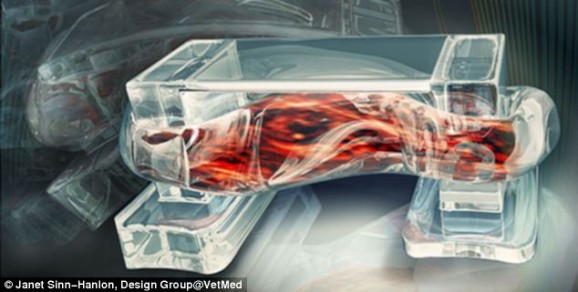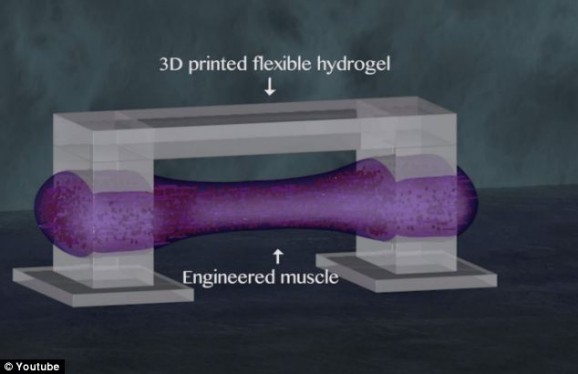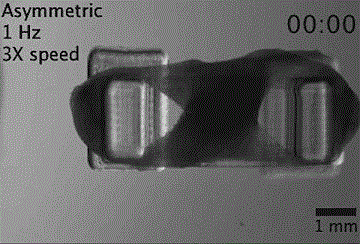Robots Use Actual Human Muscles To Move
This article is more than 2 years old
 I guess DARPA’s not the only agency working on human robots, or robot humans. Usually I think of cyborgs as humans with a machine part or two, rather than the other way around, but that may soon be changing. Researchers at the University of Illinois recently demonstrated the first robot that moves via stimulation of actual living muscle — the aptly named “biobot.”
I guess DARPA’s not the only agency working on human robots, or robot humans. Usually I think of cyborgs as humans with a machine part or two, rather than the other way around, but that may soon be changing. Researchers at the University of Illinois recently demonstrated the first robot that moves via stimulation of actual living muscle — the aptly named “biobot.”

Inspired, as so many robots are, by natural movements generated by muscles, tendons, and bones, these biobots move when the muscles flex, which propels them forward like inch worms. The muscle cells are electrically stimulated, which controls the speed of the muscle contractions. The structure of the bot itself is formed from 3D-printed flexible hydrogel roughly a centimeter long. This only allows for movement in one direction, kind of like a joint, but future innovations may change that.

In 2012, the same researchers developed a similar bot that used heart cells to power it along, but heart cells are difficult to control because they beat spontaneously and never really stop beating (how annoying!), so the researchers wanted to figure out a way to address that. The new breakthrough offers unprecedented control over the movements of the biobot and opens up possibilities for specific customizations in the future, including movement triggers beyond electric pulses, such as chemicals or light. This is yet another advance in bioengineering, and as time goes on we’ll see these principles used in bigger systems that have wide-reaching environmental and medical uses, including targeting drug delivery and surgery.
According to the researchers’ publication in the Proceedings of the National Academy of Science, long-term goals include training and programming biological machines to perform a number of tasks both in and out of the body. While these little muscle bots are both awesome and kind of adorable in their tinyness, it doesn’t take much to imagine them becoming bigger, scarier, and awesomer. I’m sure DARPA’s thinking the same thing.













Leave a comment
You must log in to post a comment